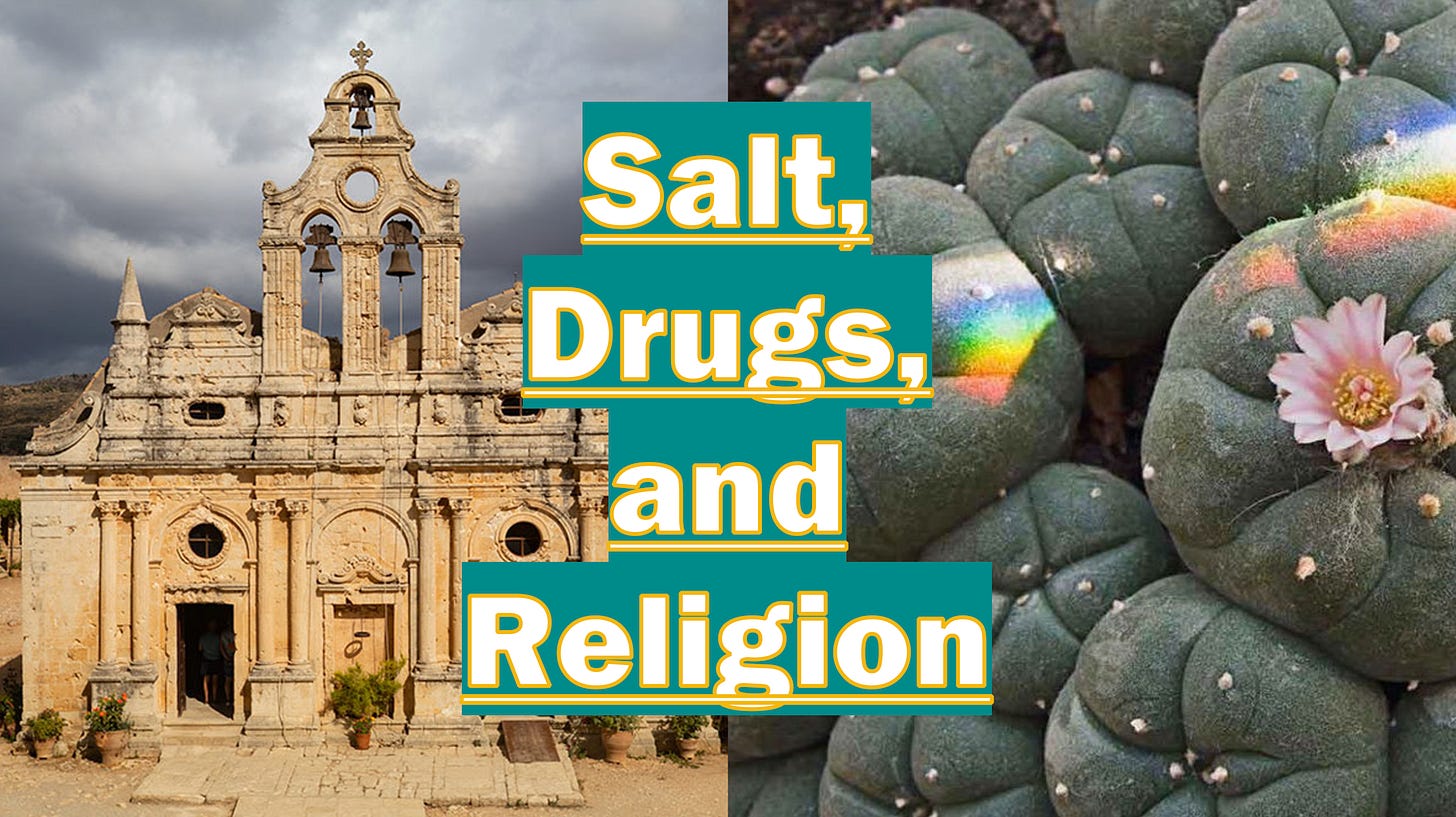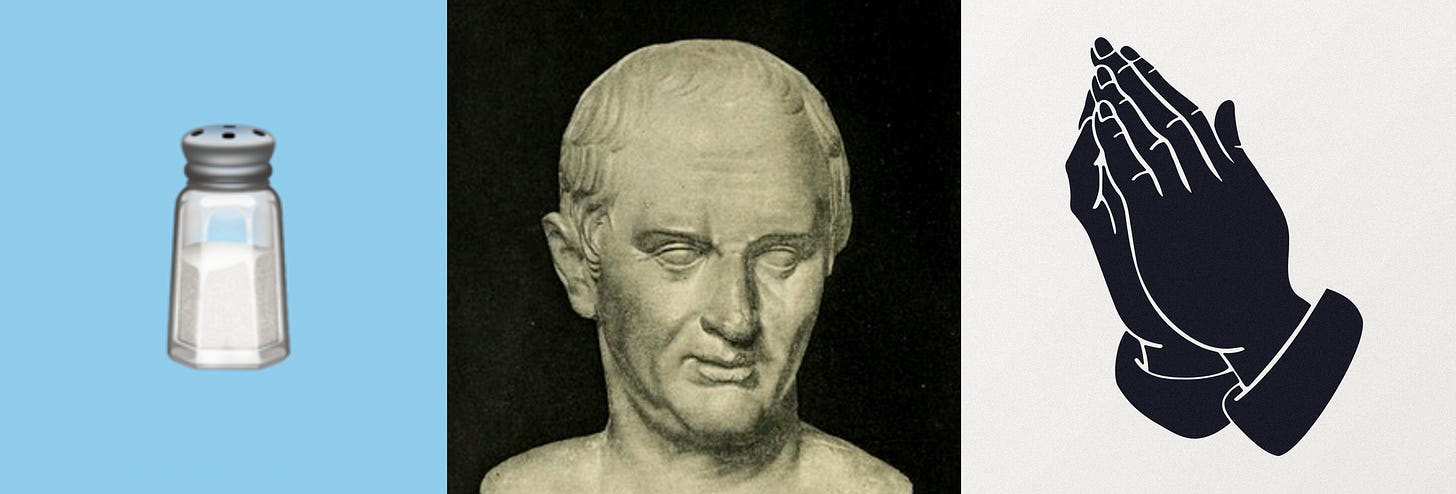On left, a monastery. On right, peyote cacti. See photo credits below.
The following is an excerpt from p. 33-34 of Chapter 1, “Precious Crystals: What Salt Teaches Us About Drugs” from my new book, Drugism (2022):
Just as many drugs have held special roles in religious belief and ritual, so too has salt. Salt has been used as a central factor in rituals for millennia, similarly to cannabis, alcohol, tobacco, psilocybin mushrooms, and more recently coffee, sugar, DMT, ketamine, and others, all of which have been used for religious purposes. In fact, as we will find with many drugs, religious use often precedes and sets the stage for widespread medical use, which often precedes and sets the stage for widespread recreational use. (Although it should be noted that the very distinctions between “religion,” “medicine,” and “recreation” are themselves socially constructed, and quite blurry).
Just as many drugs have held special roles in religious belief and ritual, so too has salt.
Going back to the time of Kemet (ancient Egypt), salt was used in “sacrifices and offerings,” as well as mummification, a practice which itself held deep spiritual significance. Salt-as-sacrifice was also practiced in Ancient Greece and Rome, where salt mixed with water was used to invoke deities. The Roman historian Tacitus wrote that “Germanic tribes believed the gods listened more attentively to prayers if they were uttered in a salt mine.”[i]
With the expansion of Christianity, [historian Mark] Kurlansky informs us that “monasteries were often located on the sites of ancient [salt] mines,” sometimes the very same mines used by pre-Christian communities. Monasteries did this because “the salt could provide revenue.”[ii] Religious institutions’ control of salt mines as revenue generators is its own early type of salt tax. This particular dynamic around salt access evolved into the more politically complex forms seen later.





